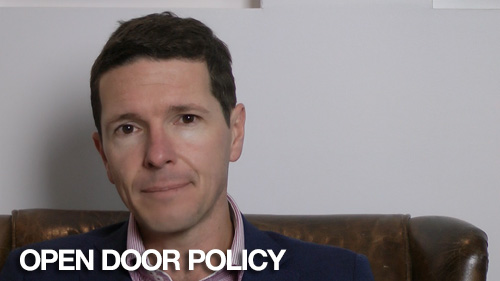
Following a heavy share price drop earlier this year, Monadelphous Group may look like a bargain to some investors. In this article, Roger Montgomery discusses our view on the former market darling.
Successful value investors have a clear focus: buy exceptional companies at bargain prices. Mining services provider Monadelphous Group (ASX:MND) has performed exceptionally for nearly a decade, and after slumping 40 per cent this year on fears of a fading resources boom it may look like a bargain.
The market doesn’t see it that way. Broking firms have fallen over themselves this year to issue sell recommendations on MND and short sellers and even some prominent offshore investment newsletters have gone cold on the former market darling. Its share price has tanked, falling from over $27 to under $15 recently.
In turn, competition among mining service firms has intensified and led to greater price discounting and lower profit margins. At the same time, big mining companies have renewed focus on cost cutting to help counter falling revenue, meaning further pressure on service providers.
The result is poor earnings visibility for most mining services stocks. Service providers, of course, point to their pipeline of work to reassure the market. But the pipeline can dry up quickly for companies at the mercy of projects being deferred or cut back.
Seasoned value investors know the best time to buy is when everyone is selling and excessive market noise is driving stocks well below their intrinsic value. Such scenarios can create tremendous value opportunities for investors who go against the tide.
Could there even be parallels between higher-quality retail stocks and the best mining services stocks after recent price falls? Retail stocks were thumped last year amid market fears over a slowing economy and the threat of online retail sales. Six months later, the best retailers, such as JB Hi-Fi and The Reject Shop (both owned by Montgomery Funds), had soared off their lows.
Nothing had changed fundamentally for retail – if anything, the outlook has deteriorated in recent months as consumer and business confidence has waned and retail sales growth slowed. The market simply over-reacted and oversold retailers, creating opportunities for value investors like Montgomery.
True believers could argue the same situation is unfolding for MND. Not unlike JB Hi-Fi in some ways, MND is its sector’s highest-quality company, firmly in the sights of short-sellers and bearish broking analysts, and battling a perfect storm for its industry.
The mining services sector has been a sea of profit downgrades and smashed share prices this year. Mining activity has slowed sharply because falling commodity prices have forced billions of dollars of projects to be cancelled, deferred or cut back. More cancellations seem inevitable.
At the full year MND reported an ‘abnormal’ period of growth. Full year 2013 profits grew to $156.31 million from $137.34 million previously. After tax profit rose 25 per cent on the back of a 37.8 per cent rise in revenue to to $2.61 billion. The engineering construction division (booking $700 million in, mostly, new iron ore contracts) reported a 56 per cent rise in revenue, and 50 per cent growth was recorded in infrastructure division revenues. Maintenance and industrial services however remained flat.
Importantly, the company noted that operating cash flow was being detrimentally impacted by mining customers lengthening contracts and increasing their payment terms. Chairman John Rubino wrote in his Shareholder letter, “Customer sentiment has changed from an aggressive growth focus to an efficiency focus as commodity prices have normalised in a rising cost environment”, adding, “with market conditions softening…2013/14 will be a year of consolidation
with revenue levels moderating and not expected to reach those achieved in the previous year.”
This is no market for companies with even a sniff of earnings uncertainty. Fund managers have shown they will pay higher multiples for large and even small-cap companies with “annuity style” recurring earnings, and dependable growth, such as telcos, utilities and banks – and punish the rest.
The big problem is nobody knows where the resource sector malaise will end. Trying to second-guess China’s economic strength and short-term commodity price movements is a mug’s game. The best guide is history: the commodity price cycle has a habit of doing better than the market expects on the way up, and worse on the way down – and it always takes longer to play out than investors expect – or should we say ‘longer than investors forget’?
Another certainty is the resource sector being a big ship to turn. Key headwinds for the sector, notably high wages and input costs, are starting to ease as lower demand pushes down prices. The resolution of the federal election on September 7 will help
if the Coalition is elected and reduces green tape and other regulatory and taxation uncertainty (carbon) for miners. And the lower Australian dollar is helping offset falls in US-dollar-priced commodities for local miners and ease some pain.
But these trends will take time to help resource projects. Perhaps in a few years the smart money might recognise the seeds have been planted for the next boom in resource stocks. For now, we believe a slow, painful transition is ahead as the resource sector deals with its own “new normal”.
The other problem is the nature of many mining services providers: high capital investment, high fixed costs, and rapidly depreciating equipment that can sit idle for months. This is a great industry when demand is strong but the sector historically only covers
its cost of capital under boom conditions. It is a terrible sector when projects quickly stop and one must remember that service providers have little flexibility.
MND’s result was strong but such growth cannot be repeated in coming years as the resources investment boom tapers.
As the market obsesses about next year’s earnings, it is worth examining MND’s strategy during this transition period for the resources sector. With revenue slowing, it wants to recruit more of the best talent, improve efficiencies, cut costs and diversify the business into other sectors.
Newspaper reports in August suggested MND might invest in the troubled telecommunications contractor, Service Stream, but MND did not respond to the rumour. It clearly has the balance sheet power to buy weakened competitors and move into other sectors.
Essentially, MND is de-risking the business and positioning it to cope with continuing profit-margin pressure and client demands for more service efficiency. It is a smart strategy, although critics could argue the transition should have happened earlier and that it adds to investment risks.
From a sentiment point of view, strategic shifts that create efficiencies and diversify earnings are not nearly as sexy as big contract wins and can quickly bore an impatient market. But they can also lay the groundwork for the next growth spurt, and reward long term investors who can withstand short term share price pain and volatility.
Overall, the macro outlook for MND and other service provides suggests more profit downgrades and disappointments (as we have been warned about by Boart Longyear), a pick-up in mergers, and even a few companies going into in administration in FY14. It is a brave speculator (rather than investor) who believes mining services stocks cannot possibly fall any further, after savage declines this year.
Value investors must consider whether MND can navigate through these conditions and come out stronger as it uses its balance sheet strength to diversify operations, and mop up weakened competitors. If it can, today’s valuation will look, with the benefit of hindsight, like a rare opportunity.
MND’s record gives hope. The market, of course, always looks forward, but in times of great earning uncertainty it can pay to look backwards as well. Monadelphous’s return on equity, above 50 per cent for the past seven reporting periods, is exceptional.
Its management team is among the best-regarded in the mining services sector, debt is low for a company of its size, and it has a history of under-promising and over-delivering. It has all the hall marks of a Montgomery-qualified business.
The $1.5-billion service provider, involved in large engineering construction projects, maintenance and industrial services, and infrastructure, earns a big chunk of its revenue from blue-chip clients such as BHP Billiton and Rio Tinto. In this market, look for mining services companies that are leveraged to production rather than exploration projects, and to lowest-cost miners that will survive if commodity prices fall further.
The critical question, of course, is whether MND’s valuation fairly reflects these opportunities and threats. Importantly, investors also need to be satisfied that the prospects for intrinsic value appreciation are bright. Speaking with the benefit of some experience, there is a risk of further declines to estimated intrinsic values if the industry doesn’t consolidate dramatically by attrition and price competition becomes irrational.
While MND might be trading at a discount to current estimates of intrinsic value, it is only significantly underpriced if one believes valuations may stabilise from here or rise.
According to consensus forecasts, MND will have to endure falling return on equity over the next two years. Investors should always look for companies heading the other way, with big future increases in ROE and intrinsic value.
MND should have a pole position on watchlists for investors who are comfortable with higher-risk sectors, such as mining services. It is not quite value, assuming a high margin of safety is required, but further falls could be a catalyst for more aggressive fund managers to accumulate the stock.
Importantly, we believe there is time for more conservative value investors to assess the situation. The resource sector’s transition will take a few years to play out, and MND itself could have a year or two of consolidation, before (if) stronger growth resumes.





